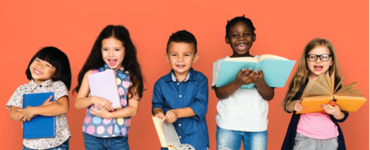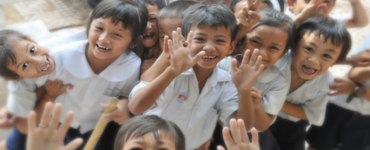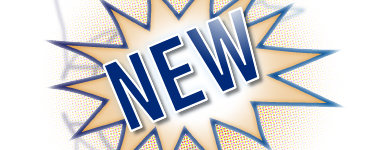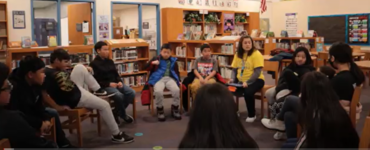The author shares experiences working in a suburban Twin Cities district and recent studies that inspired her to examine what the science of reading research offers educators about what works for supporting students who are learning English while simultaneously learning to read, related criticisms, and the implications for teachers of emergent bilinguals.
Keywords: kindergarten, emergent bilinguals, science of reading, early learners, EL/ELL
Introduction
Recent interest in cognitive science research on reading, along with increased media attention of the findings, has re-ignited debate over literacy instruction in schools across the country. This is of particular significance for teachers of early learners, and as classes continue to become more linguistically and culturally diverse. The purpose of this review is to analyze what reading research offers educators about what works for supporting students who are learning English while simultaneously learning to read, its related criticisms, and the implications for teachers of emergent bilinguals. Furthermore, I propose that by adopting an attitude of “intellectual humility,” educators may find opportunities to limit the politicization of cognitive science research on reading and consider diverse perspectives in order to better meet the needs of early literacy learners from all backgrounds. And in doing so, educators may change instructional practices and policies to dismantle racist ideologies, advance equity, and promote justice for minoritized groups (Flores & Rosa, 2015; Grierson, 2023).
In this analysis, I first provide rationale for the selection of articles for research and provide context for my interest in the topic. Then, I provide definitions relevant for the review. Next, I present recent legislation in Minnesota and discuss the unique needs of emergent bilinguals by considering the sociolinguistic implications of the studies, including deficiencies in the science of reading research. Lastly, I propose ideas for future studies, as well as how we, as educators, might benefit from adopting “curious, collaborative inquiry” for collective professional growth (Grierson, 2023, p. 40).
How the reading instruction debate is playing out in one Minnesota school
Over the past three years in the suburban district of the Twin Cities metro area where I work as a kindergarten classroom teacher, fellow colleagues and I have advocated for more professional development and evaluation of core curricular resources in order to better align literacy practices and assessments with what brain research from the last decade has demonstrated about how children learn to read (WISE Channel, 2013). Administrators and district literacy leaders had been dismissive of our requests initially, attributing the renewed interest in explicit phonics instruction and systematic teaching of foundational literacy skills as antithetical to the balanced literacy approach championed by the ‘Units of Study’ curriculum we use for literacy instruction (see Hanford, 2022). However, since then, legislative initiatives “…in at least 22 states have proposed ways to better align reading instruction with scientific research,” including in Minnesota (Peak, 2023, para. 15 [see map]).
Last year in our district, rather than informing its educators of these legislative initiatives and inviting teachers and families – who have the most direct instructional impacts on student outcomes – to join the conversation about next steps, district leaders excluded many of its stakeholders from the discourse. They also ignored requests for the training opportunities provided to other educators in the state. Instead, teachers were briefed on the district’s vision for how it plans to address the goals outlined by the Minnesota Department of Education, with a limited overview of the research, which Goldberg (2020) and Seidenberg et al. (2020) discuss at length as one of the problems in messaging for science of reading enthusiasts. This year, the same teachers who had been dismissed initially are being asked to share learning we sought out on our own with colleagues, as the district must now move towards a structured literacy framework outlined in recent legislation.
Contextual background and selection of articles for review
This issue is of particular significance for teachers of early learners such as myself, and as classes continue to become more linguistically and culturally diverse. In this review, I examine studies conducted in the past 10 years in order to understand the most recent trends and applications in educational practices. Because I have been teaching at the primary level in the Twin Cities area for the past 12 years, I selected articles pertaining to primary age students. As a white female teacher with limited language proficiency beyond English, who supports students from linguistically and culturally-rich backgrounds, I was also interested in research by scholars from a variety of linguistic and sociocultural speech communities. Additionally, in order to prevent confirmation bias, I sought out research that differed from that of my personal experiences as an informal researcher-participant. When implementing instructional practices aligned with the science of reading, instructors at my school and I have had evidence to suggest preliminary success with learning early literacy skills, for all students, and specifically those from minoritized and racialized groups (Flores & Rosa, 2015).
What is the “science of reading”?
What is often called the “science of reading” is in fact a continuously-developing, vast body of research, an “ongoing endeavor” that incorporates what cognitive psychologists and neuroscientists have discovered using brain imaging techniques to explain the neurological processes involved in learning to read (Seidenberg et al., 2020; WISE Channel, 2013). This research builds on previous reading theories by educational psychologists, such as the Simple View of Reading (SVR) proposed by Gough and Tunmer, Ehri’s Alphabetic Principle, and Scarborough’s Reading Rope (see ReallyGreatReading, 2021). The research also includes findings presented in the National Reading Panel Report, “an evidence-based assessment of the scientific research literature on reading and its implications for reading instruction” (Seidenberg et al., 2020, p. S123). The report includes the assertion that explicit and systematic instruction incorporating the five pillars of reading – comprehension, fluency, vocabulary, phonics, and phonemic awareness – leads to successful reading for over 90% of identified students (Goldenberg, 2021; Seidenberg et al., 2020, p. S123). But, as Goldenberg argues, “we don’t have comparable estimates for English learners” (2021, p. 4).
Who are English learners? What does it mean to be an emergent bilingual?
Here in Minnesota, an “English learner” is defined by MN state statute 124D.59 as:
a pupil in kindergarten through grade 12 or a prekindergarten student enrolled in an approved voluntary prekindergarten program under section 124D.151 or a school readiness plus program who meets the requirements under subdivision 2a or the following requirements:
- the pupil, as declared by a parent or guardian, first learned a language other than English, comes from a home where the language usually spoken is other than English, or usually speaks a language other than English; and
- the pupil is determined by a valid assessment measuring the pupil’s English language proficiency and by developmentally appropriate measures, which might include observations, teacher judgment, parent recommendations, or developmentally appropriate assessment instruments, to lack the necessary English skills to participate fully in academic classes taught in English.
(Minnesota Legislature, 2022)
According to Lü, “about one-third of children under age 8 in the United States have at least one parent who speaks a language other than English at home. And as of 2016, 9.6% of all U.S. public school students were identified as English language learners [ELLs]” (Lü, 2020). This year, at the suburban kindergarten center where I teach, of the approximately 490 kindergarteners, 19.4% receive English Language [EL] services, 44.9% of students are eligible for free-or-reduced price lunch, and 10.2% receive special education services. In speaking with our only two EL teachers (contracted as 1.5 FTE), servicing roughly 100 students, the number of EL students who qualify for services at our school has continued to grow over time, even doubling some years recently, which is on par with national trends (Gottlieb, 2016, pp. 3–4). There are 27 different languages spoken by students and families at our school, with Spanish, Somali, and Oromo being the top three, after English. The racial makeup of our student population includes: 55.9% White, 13.9% Black, 10.4% Hispanic, 6.9% Asian, 11% Multiracial, 0.6% Native American, and 0.4% Hawaiian/Pacific Islander.
Clearly, students who qualify for EL services at our school are linguistically and culturally diverse. And because our students are 5 and 6 years old, most are bilingual or multilingual learners actively developing speaking and listening skills in two or more languages, while some are also receiving reading and writing instruction in languages other than English both within and outside of school (Gottlieb, 2016, pp. 4–5; Wright, 2019, p. 10). While acknowledging the vast background experiences and linguistically diverse practices of students at our school, for the purposes of this review, I will use the term emergent bilingual, adopted from Ofelia García’s research on translanguaging, to refer to the kindergarten students at our school who flexibly utilize “linguistic resources to make meaning of their lives and their complex worlds” (Celic & Seltzer, 2013, pp. 1–6).
Legislation in Minnesota
In the wake of the pandemic, aggregate data of student outcomes showed a decline in reading achievement in 2021, particularly acute for minoritized and racialized groups in the state of Minnesota, where we have one of the worst opportunity gaps in the nation (Minnesota Department of Education, 2021). In response, the Minnesota Department of Education, henceforth MDE, created “COMPASS…[a] statewide education system to support student learning recovery” (MDE, 2021, pp. 57–62). This initiative outlines the belief that literacy is a transformative human right, that successful supports include structured literacy instruction across all pillars of reading, that asset-based education necessitates culturally-responsive pedagogy, and that data-driven differentiation for individual student needs accelerates learning (MDE, 2021, pp. 57–62). Additionally, the BOLD Literacy Action Plan and timeline offers suggestions for educators of various positions to implement these ideals, but does not enforce practice (MDE, 2022b). Most recently, the READ Act, which replaces Read Well by Third Grade, focuses on updating what we use for screening, training, and curriculum “to have every Minnesota child reading at or above grade level every year, beginning in kindergarten, and to support multilingual learner and students receiving special education services in achieving their individualized reading goals” (MDE, 2023). However, as with the program models and related supports outlined in state legislation related to emergent bilinguals, literacy legislation in Minnesota is largely left up to district discretion, which varies drastically across the state, and even throughout the Twin Cities metro – as evidenced by the two EL teachers at 1.5 FTE who were tasked with supporting the language needs of 100 students at my school this past year.
What works for supporting emergent bilinguals?
The pedagogies, instructional practices, and “opportunities of students’ cultural resources” suggested in the reviewed research on developing reading and language skills provide context for what has been proven effective for emergent bilinguals (Goldenberg, 2020, p. S133). Researchers agree that supporting literacy development in both or all languages practiced by students leads to academic achievement. Ríos and Castillón (2018) contend that successful pedagogies for supporting ELs include: Dual Language or Bilingual Education Programs and Paired Literacy Instructional Models (Ríos & Castillón, 2018, pp. 91–92). Additionally, “‘The Bridge’ approach, in which the teacher helps students… understand metalinguistic connections” has been studied as an effective instructional practice (Ríos & Castillón, 2018, p. 92). The follow-up to the National Reading Panel Report specific to ELs also concluded that continuous development of literacy in the first language while learning the second language has been shown to lead to significant gains for ELs (Goldenberg, 2020, p. S310; Ríos & Castillón, 2018, p. 87). This research indicates that reading skills transfer across languages and “bilingualism boosts children’s metalinguistic awareness,” with some studies showing a bilingual advantage in executive functioning (Lü, 2020, p. 5).
Translanguaging offers another pedagogy which allows teachers to build on students’ metalinguistic awareness skills while disrupting the paradigm of additive bilingualism and going “beyond the alternation of languages (code-switching), capturing instead the full and complex repertoires of practices and semiotic resources that individuals mobilize in various contexts” (Flores & Rosa, 2015, p. 153). This is particularly relevant for emergent bilinguals at my school, who, like “87% of all ELLs…nationally” are not in bilingual programs (National Education Policy Center, 2021) and are being provided literacy instruction from “majority White (80%) teachers in U.S. schools” (Milner, 2020, p. S250). Translanguaging strategies can be utilized by bilingual and monolingual teachers, so that emergent bilinguals may “draw on their entire linguistic repertoires…[to] fully demonstrate their content learning without being limited to one specific language or another” (Noguerón‐Liu, 2020, p. S313). Making the connections between languages explicit, teachers can act as both guides and learners, helping all students develop metalinguistic awareness, a prominent focus in both reading research and translanguaging pedagogy (Duke & Cartwright, 2021; MinneTESOL, 2021; Moats, 2020; Noguerón‐Liu, 2020).
Critical issues relating science of reading research to support for emergent bilinguals
Science of reading researchers have suggested that early literacy instruction, including “foundational knowledge and skills of phonological awareness, letter-sound mapping, phonics, and decoding” is the same for monolinguals and emergent bilinguals; however, they argue that these skills are “not enough” and that “explicit oral ELD [English language development]” is also necessary “to help [EL] students understand the words and texts” they are learning to read (Goldenberg, 2020, pp. S133–S134). Critics worry that emergent bilinguals in general education classes will not receive these additional supports, which would adversely affect reading and writing comprehension (National Education Policy Center, 2021; Noguerón‐Liu, 2020).
Furthermore, researchers critical of the science of reading argue that it perpetuates racialized ideologies by effectively erasing emergent bilinguals and other minoritized groups, as well as their linguistically-rich troves of knowledge and experiences from relevant research studies, curricula, and assessments (Noguerón‐Liu, 2020). Critics claim that it uses “implicit and overt racist and White supremacist practices in producing and disseminating knowledge” (Milner, 2020, p. S250); and can be perceived as prescriptivist in nature, if understood as a “one size fits all reading instruction” model and practiced as “the sole monolingual approach” to literacy instruction (Noguerón‐Liu, 2020, p. S310). Milner (2020) questions the who, the what, and the why of knowledge construction in reading; he asserts that it needs to be examined from a larger cohort of researcher perspectives so that “whiteness and maleness” are not at the center of our collective understanding, but rather, “the pages of journals about reading are as diverse as the communities we study” (p. S252).
What are the next steps?
The reviewed research, particularly brain research on reading, does not account for how “sociodemographic aspects of identity… impact the reading process” (Duke & Cartwright, 2021, p. S38). Additional research needs to take these extremely influential aspects of learning into account. Noguerón‐Liu suggests “the goal should be building an evidence-informed action plan for every reader, amplifying the voices of those who navigate multiple spheres and can bridge understandings and whose perspectives might be missing” (2020, p. S315). And as several researchers suggest, or what Seidenberg et al. refer to as the “translational question,” there is the lack of clarity for teachers about “what to teach, when, how, and for whom” (2020, p. S121). Further studies could offer teachers more detailed guidance on the scope and sequence of effective phonics instruction at the kindergarten level for example, or examine the translanguaging strategies kindergarteners use to learn early literacy skills. Additional research could also explore the various pedagogies, instructional models, curricula, and assessments used to teach reading to emergent bilinguals, as well as how educators are supported through professional development and training to implement reading science findings in the classroom. At the very least, we need to consider diverse perspectives from researchers representing minoritized and racialized groups in order to disrupt the racist, monolingual viewpoints inherent in much of the current debate. There are many possibilities for learning more.
Conclusion
While these issues are certainly not exhaustive of all the complexities involved in reading instruction for emergent bilinguals, I agree with Grierson’s (2023) conclusion that the more diverse perspectives we consider, the smaller our blind spots and better our collaborative decision-making will be in planning, policy, and implementation. By embracing the idea of “intellectual humility” or “the degree to which one accepts that they could be wrong,” we might move away from privileging our own positions and towards a more curious approach to data collection, as well as the inherent variability of epistemological processes, both individually, and as a larger society (Grierson, 2023, pp. 40–41). In school settings, such as at the kindergarten center, this means leveraging our sociocultural resources to ensure racialized and minoritized perspectives are heard, valued, and supported.
“Curious people ask a lot of questions—
and that is a sneaky superpower in a culture obsessed with answers” (Grierson, 2023, p. 41).
References
Celic, C. M., & Seltzer, K. (2013). Translanguaging: A CUNY-NYSIEB guide for educators. CUNY-NYSIEB.
Duke, N. K., & Cartwright, K. B. (2021). The science of reading progresses: Communicating advances beyond the simple view of reading. Reading Research Quarterly, 56(S1), S25– S44. https://doi.org/10.1002/rrq.411
Flores, N., & Rosa, J. (2015). Undoing appropriateness: Raciolinguistic ideologies and language diversity in education. Harvard Educational Review, 85(2), 149–169.
Goldenberg, C. (2020). Reading wars, reading science, and English learners. Reading Research Quarterly, 55(S1), S131–S144. https://doi.org/10.1002/rrq.340
Goldenberg, C. (2021, May 3). Science of reading advocates have a messaging problem. EducationWeek. Accessed 13 November 2021 at https://www.edweek.org/teaching-learning/opinion-science-of-reading-advocates-have-a-messaging-problem/2021/05
Gottlieb, M. (2016). Assessing English language learners: Bridges to educational equity: Connecting academic language proficiency to student achievement (2nd ed.). Corwin.
Grierson, B. (2023, July). The certainty trap and it’s time to escape. Psychology Today. 38-44.
Hanford, E. (2022, October 20). Sold a story: How teaching kids to read went so wrong. APM Reports. https://features.apmreports.org/sold-a-story/
Lü, C. (2020). Bilingualism and biliteracy for all: Celebrating our linguistic Strengths. American Educator, Summer 2020.
Milner, R. H. (2020). Disrupting racism and whiteness in researching a science of reading. Reading Research Quarterly, 55(S1), S249–S253. https://doi.org/10.1002/rrq.347
Minnesota Department of Education. (2021, October 20). COMPASS overview and implementation timeline [Presentation]. https://education.mn.gov/MDE/dse/compass/index.htm
Minnesota Department of Education. (2022, November 4). BOLD literacy leadership actions. https://education.mn.gov/mdeprod/idcplg?IdcService=GET_FILE&dDocName=PROD070029&RevisionSelectionMethod=latestReleased&Rendition=primary
Minnesota Department of Education. (2023, June 30). The Minnesota reading to ensure academic development (READ) act. https://education.mn.gov/MDE/dse/READ/
Minnesota Legislature. (2022). Minnesota Office of the Revisor of Statutes. https://www.revisor.mn.gov/statutes/cite/124D.59
MinneTESOL. (2021). MELEd 2021 keynote speaker Nelson Flores [Video]. YouTube. https://youtu.be/i1Y7os71Npw
Moats, L. C. (2020). Teaching reading is rocket science. American Educator, Summer 2020. https://www.aft.org/ae/summer2020/moats
National Education Policy Center. (2021, March). Caught in the crosshairs: Emerging bilinguals and the reading wars. National Education Policy Center Newsletter.
Noguerón‐Liu, S. (2020). Expanding the knowledge base in literacy instruction and assessment: Biliteracy and translanguaging perspectives from families, communities, and classrooms. Reading Research Quarterly, 55(S1), S307–S318. https://doi.org/10.1002/rrq.354
Peak, C. (2023, May 18). After sold a story, more states spell out reading instruction. APM Reports. https://www.apmreports.org/story/2023/05/18/legislators-reading-laws-sold-astory
ReallyGreatReading. (2021, February/July). Science of reading workshops: Emerging reader workshop grades PK-1, developing reader workshop grades 1-12. Online virtual webinar.
Ríos, C., & Castillón, C. (2018). Bilingual literacy development: Trends and critical issues. International Research and Review: Journal of Phi Beta Delta, 7(2), 85–96.
Seidenberg, M., Borkenhagen, M. C., & Kearns, D. M. (2020). Lost in translation? Challenges in connecting reading science and educational practice. Reading Research Quarterly, 55(S1), S119–S130. https://doi.org/10.1002/rrq.341
WISE Channel. (2013, October 15). How the brain learns to read – Prof. Stanislas Dehaene [Video]. YouTube. https://www.youtube.com/watch?v=25GI3-kiLdo
Wright, W. E. (2019). Foundations for teaching English language learners: Research, theory, policy, and practice (3rd ed.). Caslon, Inc.






